横川の歴史&アートスポット
横川の歴史スポット
横川の歴史(横川駅前広場)

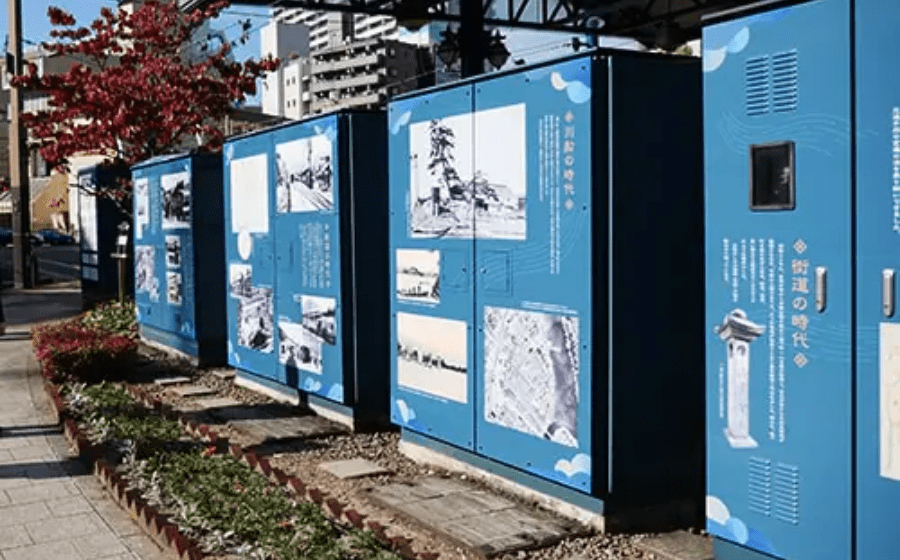
なぜこのような個性のある街になったのか。
横川の歴史を紐解いていくと、その個性の謎を知ることができるかもしれません。
昔のJR横川駅 駅構内(可部線と山陽線)
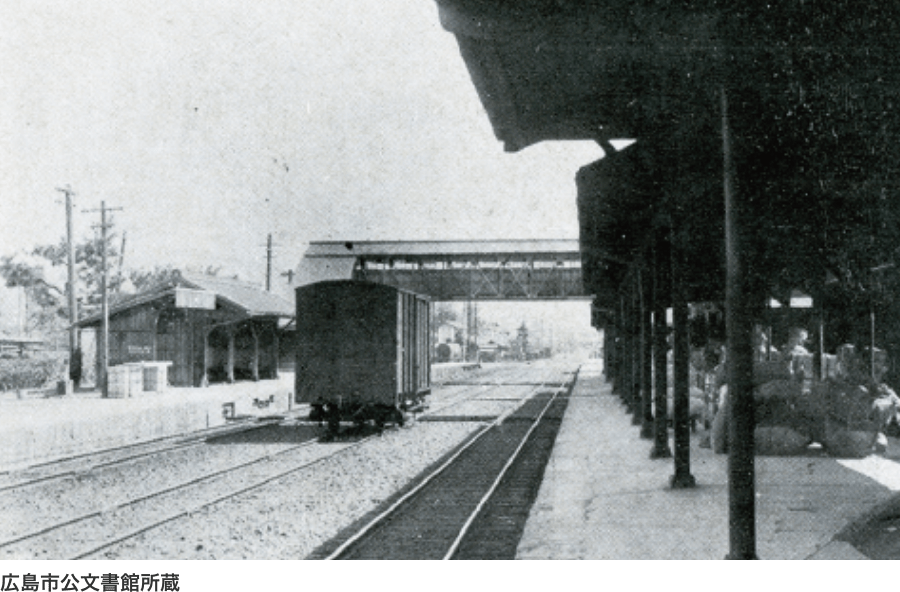
1897年に、山陽鉄道の横川駅が開設されました。
左が可部線横川駅。
昔の広電横川駅とJR横川駅

1971年4月に撮影されたものです。
手前の人が立つ場所が広電横川駅。奥の白い建物がJR横川駅。
横川の歴史についてもっと知りたい方はこちら
横川の歴史かよこバスKayoko Bus
わが国初の国産乗合バスJapan’s first domestically produced passenger bus

1905年2月に、日本で最初の国産乗合バスとして横川~可部間を走りました。
車体はアメリカ製のエンジンにケヤキづくりの12人乗り。
2004年の駅前広場の改築に合わせ、横川の地域住民を中心に広島市立大学の協力を得てバスを復元しました。
バスは横川と可部の地名から「かよこバス」と命名され、横川駅前広場の車庫に常設展示されています。
In February 1905, Japan’s first domestic passenger bus.
It ran between Yokogawa and Kabe in February 1905. The body was made of zelkova,equipping seating for 12 passengers. The engine was made in the U.S.A.
In conjunction with the reconstruction of the plaza in front of the station in 2004,
the Yokogawa area residents, with the cooperation of Hiroshima City University, re-created the Kayoko Bus.
The bus was named “Kayoko Bus” using the names of Yokogawa and Kabe partially.
The Kayoko Bus is always on display in the garage in front of Yokogawa Station.
どこにあるか探してみよう!

横川の繁栄を祈念して掘られた鶴と亀。
この石画は、かよこバス周辺にあるらしいよ。
A crane and a turtle were carved into a stone to pray for the prosperity of Yokogawa.
You may want to find the stone which can be located around the Kayoko Bus.
クスノキの大雁木Kusunoki’s big wild goose tree
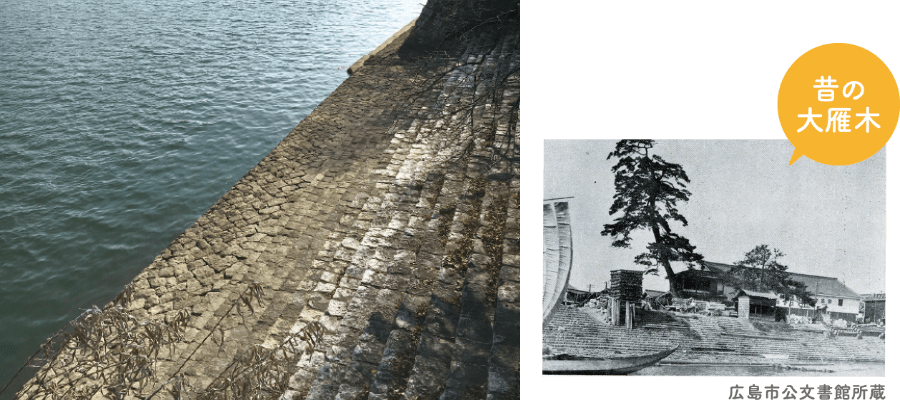
舟運の荷揚げに使っていた桟橋を雁木と呼びます。
楠木の雁木は特に大きく、江戸時代から昭和初期にかけて太田川流域で最大の貨物陸揚場として栄え、横川駅から大雁木近くまで専用線も引き込まれていました。
The pier used for unloading boats is called a Gangi. Kusunoki’s Gangi was particularly large and flourished as the largest cargo landing place in the Ota River basin from the Edo period to the early Showa period (1926-1989).
横川橋Yokogawa-bridge

江戸時代に整備された雲石街道に架かる橋でしたが、度重なる流出で1923年に鉄骨・アーチ型で架け替えられました。
原爆にも耐えましたが、1985年に老朽化のため現在の橋に架け替えられました。
また、昭和初期まで横川橋北詰に汐風呂がありました。
The bridge spanned the Unseki Kaido (Unseki Street), which was built in the Edo period (1603-1868), but was replaced by a steel-frame arch bridge in 1923 due to repeated outflows. It withstood the atomic bomb, but was replaced with the current bridge in 1985 due to its age. Until the early Showa period, there was a (hot) saltwater bath at the north end of Yokogawa Bridge.
横川胡子神社Yokogawa Ebisu Shrine

古くから横川とその近隣住民に商売繁盛の神として崇敬護持されてきました。原爆により社殿を焼失しましたが、1949年に現在の本殿が再建されました。
毎年11月には横川胡子神社大祭が開催され、復活した横川獅子舞も見ることができます。サンフレッチェ広島の勝利祈願に訪れてください。
The shrine has long been revered and protected by Yokogawa and its residents as a god of business prosperity. The shrine was destroyed by the atomic bomb, but was rebuilt in 1949. The Yokogawa Ebisu Shrine Grand Festival is held every November, and people may watch the Yokogawa Shishi-mai (lion dance). Please visit this shrine to pray for Sanfrecce Hiroshima’s victory.
おかえり観音Okaeri Kannon
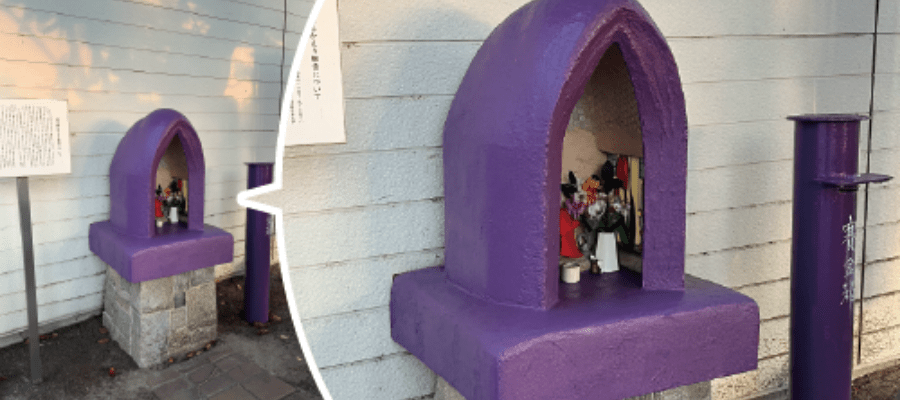
元々楠木町にあった大師堂の境内にあった数体の石仏が再開発に伴い三瀧寺に移されていました。
2004年、横川の有志が三瀧寺に遷座をお願いして、そのうちの一体を「横川橋おかえり観音」として現在地に安置されました。
Several stone Buddha statues originally located in the precincts of Daishido Hall in Kusunoki-machi were moved to Mitaki-ji Temple due to redevelopment of the area. In 2004, Yokogawa volunteers asked Mitaki-ji Temple to relocate one of them to its current location as the “Yokogawa Bridge Okaeri Kannon” (The Kannon welcomes people coming home, Goddess of Mercy).
三篠神社Misasa Shrine
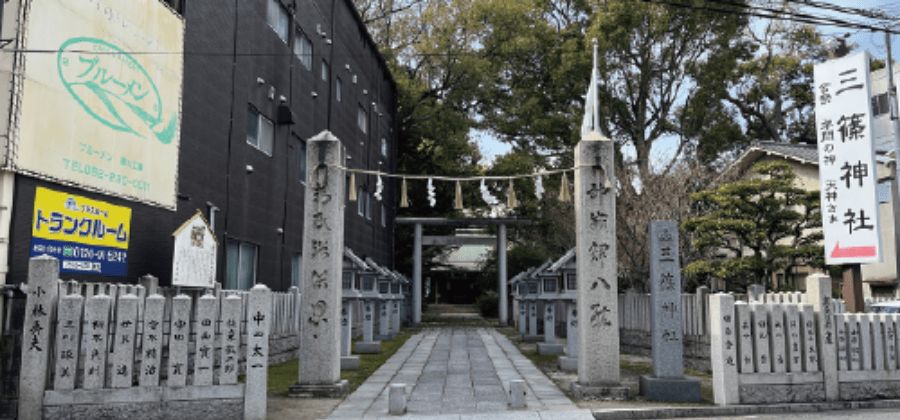
1914年に当時の三篠町の四つの神社を合して三篠神社と改称しました。
原爆で社殿と樹齢300年の樹木が焼失しましたが、現在、境内には、被爆した灯篭、狛犬、参道石、クスノキ(近くの民家から神社と三篠小学校に移植)があります。
In 1914, the name of Misasa-jinja Shrine was established by combining four shrines in Misasa-cho at that time. The shrine and a 300-year old tree were destroyed by the atomic bomb. However, the shrine grounds still hold an A-bombed lantern, guardian dogs, approach stones, and camphor trees, transplanted from a nearby private house to the shrine and Misasa Elementary School.
三篠の道標Sign posts in Misasa
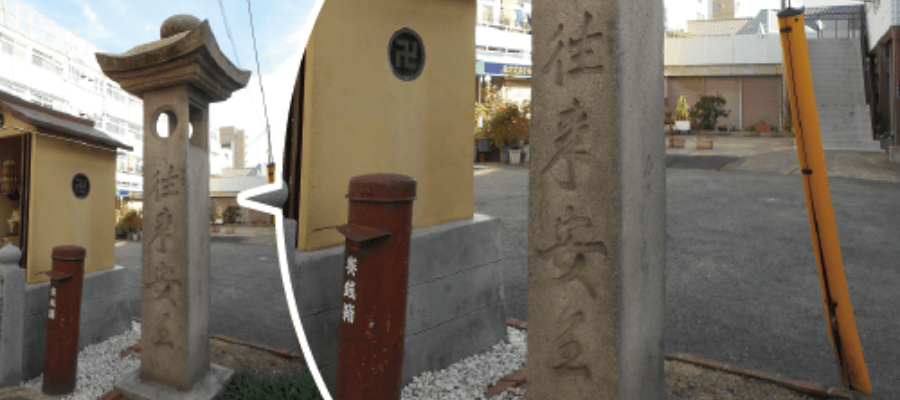
雲石街道の里程標(一里ごとに建てられた距離を示すもの)として、1875年に当時の横川駅踏切北側の東角あたりに作られました(現在は東側に移転)。
表には「往来安全」、側面には「可部町エ四里、石州濱田エ二十五里、出雲大社エ四十一里」と記されています。
As a milestone (a distance marker erected for each Ri=Japanese Mile =2.44miles) on the Unseki Kaido Road,It was built in 1875 around the east corner of the north side of the Yokogawa station crossing at that time (now moved to the east side). The front of the marker says “Safe Travel” . On the side of the plaque, there are inscriptions: “4 ri from Kabe-cho, 25 ri from Ishu Hamada, and 41 ri from Izumo Taisha.
龍泉山・光隆寺Ryusenzan, Kouryuji Temple

元は山陽線横川駅近辺にあったが、延伸工事により現在の横川一丁目電停付近に移転し、また1933年の広電複線化工事により再度現在地に移転しました。
原爆で寺は全焼しましたが、クスノキは現存しています。
Originally located near Yokogawa Station on the Sanyo Line, The building was relocated near the Yokogawa 1-chome stop on the Sanyo Line due to extension. and was relocated again to its current location in 1933 when the Hiroden line was double-tracked. In 1933,the temple was completely destroyed by the atomic bomb, but the camphor tree still exists.
横川のアートスポット
金雲のみちGolden Cloud Path

金箔で四季の雲を表現した、横川駅の南北をつなげる自由通路。
CSデザイン賞一般部門でグランプリを受賞しました。
「金雲のみち」について詳しくみる
The free passageway, connecting the north and south sides of Yokogawa JR Station, features clouds, adorned with gold leaf, representing the four seasons, This installation won the CS Design Award Grand Prix in the general category.
横川シネマYokogawa Cinema
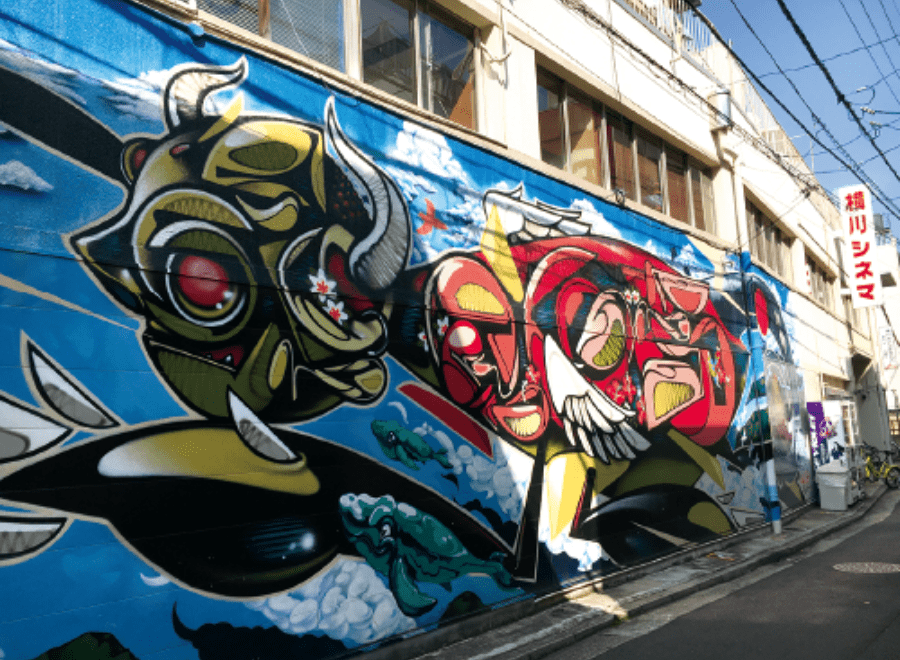
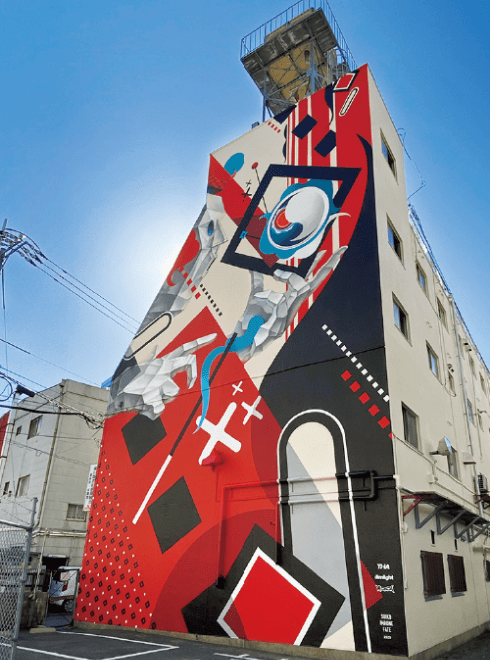
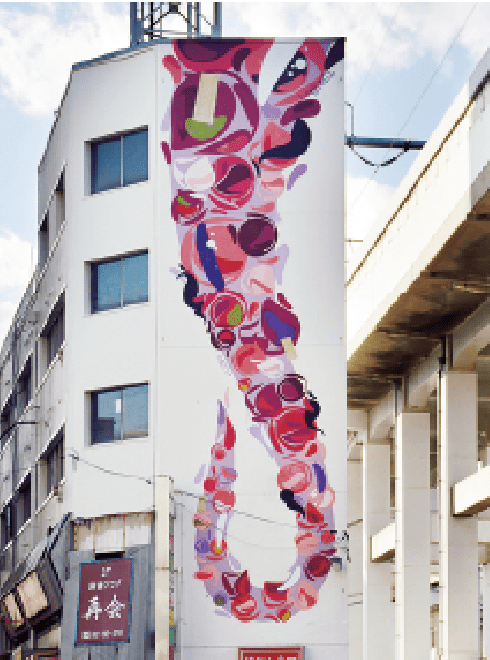
グラフティアーティストSUIKOの作品。横川商店街ビルA棟に2面、B棟に1面描かれています。
Graffiti artist SUIKO has created two panels on Yokogawa Shotengai (Merchant’s Association) Building A and one panel on Yokogawa Shotengai Building B.
アンゴラビルAngora Building
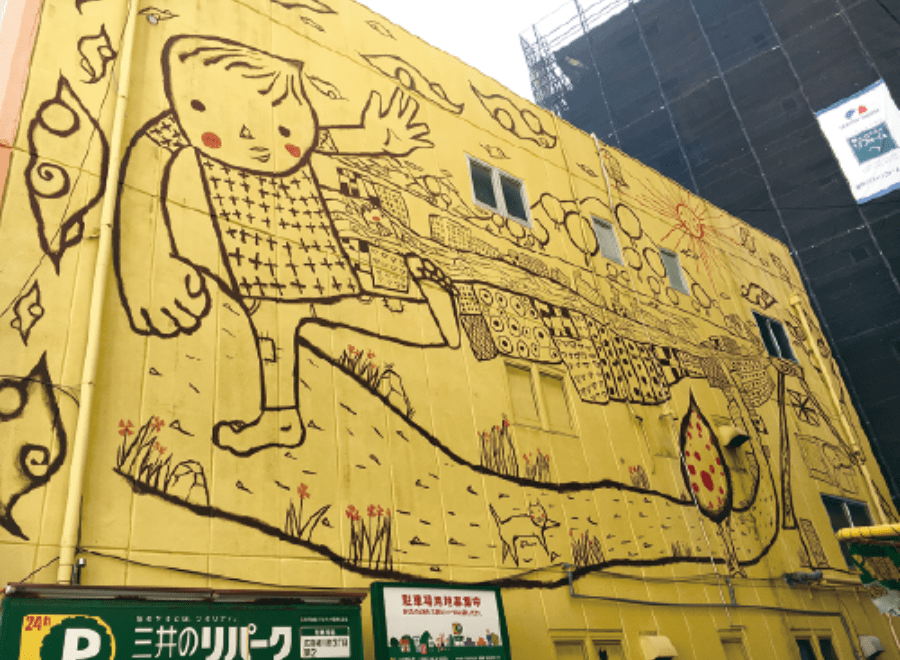
広島出身の美術作家・戸川幸一郎の作品。ビルの壁面いっぱいにイラストが描かれています。
Koichiro Togawa, an artist from Hiroshima, has beautifully painted vibrant illustrations all over the walls of the historic building.
紫の提灯Purple lanterns illuminated
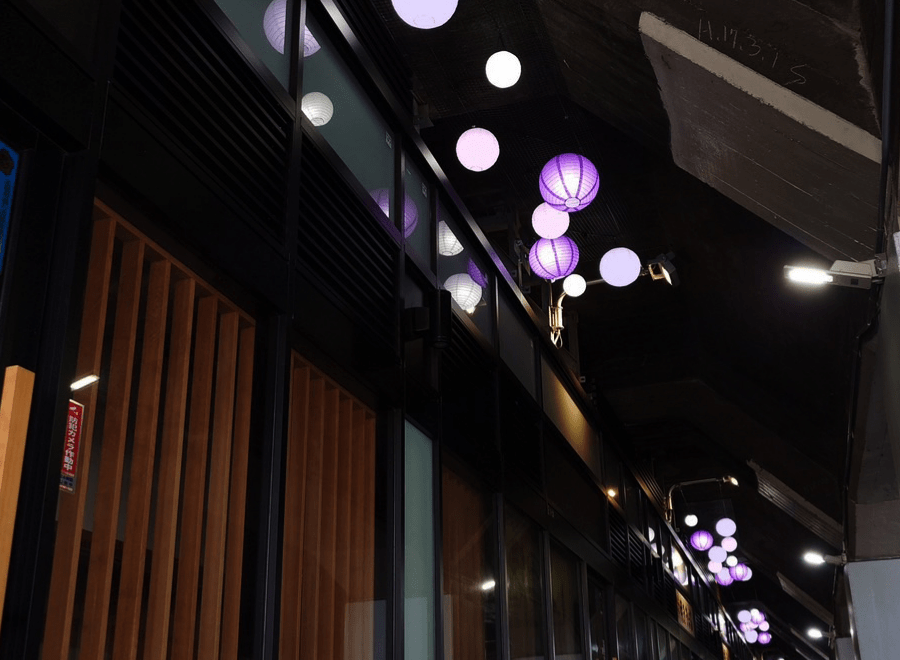
ガード下には紫の提灯のイルミネーションがあります。
There are purple lanterns illuminated, under the guard.
横川駅南口大弾幕

横川駅の南口でお出迎えしてくれるウェルカム大弾幕。

